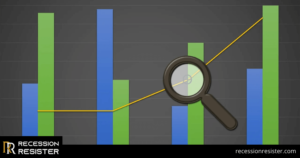Medical organizations are always striving to find different and more effective ways to create connections with the patients for the purpose of improving care and patient outcomes. The key to successful healthcare lies in the patient being a fully engaged and active participant alongside their caregivers.
In order to support those who care for patients and healthcare organizations, there are a variety of health data technology solutions available. But they are not plug-and-play solutions. They must be comprehended and arranged to give a single organization the most advantageous outcomes for that particular entity.
Procuring and Analyzing Data

Prior to choosing technology platforms that capitalize on data, Jason Considine, a senior vice president and general manager for patient experience solutions at Experian Health, proposed a good plan of action is to decide how to acquire and assess the data. Experian Health is a provider of technology-based platforms that are powered by data and help healthcare organizations with patient interaction and care supervision, among other services.
Nowadays, it is imperative to look at not only the methods of engaging with patients, but also what is driving the effectiveness of those approaches. There are many engagement solutions in the marketplace.
It is necessary for providers to offer patients customized data that applies to their particular problems and circumstances, supplied through the platforms they would like to use. Before anything can take place, you must gain access to the necessary data.
By analyzing data, a provider organization can gain insight into the characteristics of their patients. For instance, a company can take a look at a patient’s financial situation and decide if a tailored payment schedule may be more suitable, to better reflect their individual financial predicament.
An organization can generate precise cost calculations for services and provide them to people before they are given the service, giving more clarity and taking away the doubt of how much they will be required to pay.
Considine declared that these illustrations enhance the patient experience and make a setting where patients are not as worried about paying their invoice. You can come up with engagement tactics that take into consideration variables like age. If a large portion of patients are elderly, it could be productive to send out alerts via text message and email rather than counting on them to remember to check the online portal for updates.
Prioritizing Interoperability

Dr. Ashwini Zenooz, who works as the Chief Medical Officer and General Manager of Healthcare and Life Sciences at Salesforce, pointed out the importance of having interoperability with current and upcoming technologies, in order to successfully maximize the use of patient engagement technology.
She stressed that technologies for involving patients are only effective to the extent that they provide a comprehensive perspective of the patient.
A comprehensive understanding of the patient necessitates revisiting not only their medical background and data, but also all of the interactions they have had with the organization, such as digital, by telephone, or face-to-face. This data must be in a single, unified perspective for it to be of any value.
However, all of the essential information and data necessary to enhance patient-engagement technologies generally exist in distinct, disconnected systems of records, applications and networks.
It is essential for healthcare entities to keep giving priority to harmonizing their patient engagement technologies with current or soon-to-be-used tools (e.g. the EHR and applications), she explained.
She pointed out the significance of being proactive and having connections in place when new tech is brought into a medical center. Organizations should start planning to make their patient engagement technology compatible with advanced data sources, like SmartPill, IoT devices, and chips, in order to optimize patient engagement tech in the future.
Furthermore, given the new interoperability regulations that allow patients to more easily access their health information, healthcare organizations need to pay extra attention to their interoperability strategies, she remarked.
She stated that not only does the sharing and combining of information from multiple sources provide advantages for a single patient, caretaker, or customer service agent, but it also allows companies to efficiently apply their patient engagement systems to larger areas of people by creating analysis and suggestions founded in data.
Dynamic Content

Healthcare organizations that wish to maximize the effectiveness of their patient engagement IT need to create content that morphs when a person’s desires and aspirations shift. Eric Rock, the head of Vivify Health, a provider of remote patient-monitoring technology and services, declared that a universal healthcare system does not work.
He went on to illustrate that, as an example, the vitals of a patient under surveillance for congestive heart failure might show signs that allude to a potential risk of Type 2 diabetes. This data can be handled by a reasoning system that mechanically adds instruction concerning pre-diabetes for the patient in investigation.
Producing only data that is pertinent to a person is an important factor here, he mentioned. He noted that a lot of projects do not work because they just send out a single message, which only resonates with a tiny fraction of individuals being served.
“Look at COVID-19,” Rock suggested. It is a well-known fact that the most serious health hazard directly affects the elderly who suffer from existing medical issues. The communication presented to individuals who are ailing should be uniquely different than the one received by healthy people who are younger than 50. For people in their forties and younger, a distinct communication may have to be directed towards individuals with young children versus those who have none or whose kids are adults.
Gaining comprehension of these distinctions makes the messages more pertinent, thus prompting them not only to concentrate on this announcement but focus more intently on any subsequent messages, he included.
He suggested that healthcare organizations should use information to find out which delivery methods are the most effective for each patient, and change them if necessary. It is assumed that the data is accessible in varied types. Some people prefer videos. Some favor a list-style of written material which simply outlines the activities that need to be accomplished, whereas others respond better to more thorough documentation with reasoning for why certain tasks should be completed.
The same holds true for the way the material is delivered, for instance, if it is received on mobile phones or tablets as opposed to PCs and laptops, or even in printed form. He recommended that engagement requires finding out what will motivate a person to take action, and then providing the content accordingly.
Patient Responsibility, Provider Proactivity
A majority of those decisions hinge on monetary worries as businesses and insurance companies begin to place expensive deductibles and big co-pays on their patients. Zane Burke, President of Cerner Corporation, highlighted the fact that out-of-pocket expenses have steadily increased over the past three years, having risen from 15% to 25%, and that it is predicted that in three more years, almost four in ten dollars will come from the consumers themselves.
Van Terheyden stated that due to financial issues, people have altered their attitude towards making payments for medical services.
He remarked that traditionally, when one visited a doctor for care, the person would generally receive a diagnosis and treatment and would not be held accountable for the majority of the expense. The structure of health insurance is undergoing a significant transformation, particularly with the rise of insurance plans with high deductibles. Patients are becoming personally responsible for their healthcare choices. Suddenly, there has been a huge surge in the amount of people who want to make excellent decisions.
A person will be dedicating the same level of effort and duration as if they were to purchase an automobile, a washer, or their most recent cellular phone. They’ll do research. They’ll be an informed consumer.”
This implies that service suppliers and tech companies must modify the manner in which they run their business. The time has passed when a doctor would make a single choice about a treatment plan that might or might not succeed. Patients will no longer remain passive in their healthcare, only to experience surprise bills for astronomical amounts and services that were not successful.
Van Terheyden remarked that it will not be considered satisfactory to state, “I’m not certain whether this is the ideal plan for you or if it is cost-effective.” The doctor will continue to be an integral part of healthcare, yet they will be a guide to the answer, instead of the definitive origin of understanding and decisions.
Giving patients more control may not be the traditional method by which doctors stay passionate about their profession, but it might be something they have to accept. People are requesting to have more authority in regards to their health care and they want their worries to be taken care of rapidly and comfortably without them having to move off the sofa.
Patients want their doctors to be engaged in their care in the same fashion that banks and retail outlets are, allowing them to access resources, get reminders, and use online tools or self-care strategies via their phones or laptops as opposed to having to take a costly trip to the doctor’s office.
This could be a big change from the kind of care many medical professionals are used to, but the funds offered for offering this degree of personalized medical attention are increasing. Payment innovations such as accountable care organizations and other initiatives that offer incentives for quality and value are displacing the traditional fee-for-service systems.
Healthcare corporations which do not place patient communication and population health maintenance as a priority might find themselves losing out to rivals that are more technologically advanced. Patients are beginning to become aware of their ability to choose, and they are using this newfound authority to powerful results.
If healthcare providers want to maintain their links to patients and stay in business, they will have to depend on the thing they dislike most for assistance. Electronic health records and the use of powerful tools such as dashboards and databanks are the only ways for healthcare providers who want a super effective way of connecting with and organizing their patients. It doesn’t need to be as intimidating as it seems.
Bite-Size Big Data and the Digestible IOT

The key to exploiting big data analytics and patient-generated health data utilizing the IoT lies in establishing the boundaries of relevance, formulating the data into a comprehensible form and appointing the suitable individual to respond to the data visualized.
“It’s not a data problem. It’s a filter problem,” van Terheyden says. Medical practitioners need information, but they expect it to be presented in a manner that is useful and can lead to practical measures. I believe our aim should be to incorporate that data into the existing process securely. That’s where we will start to see real value.”
Physicians may not be the first point of contact when dealing with information created by patients, Bob Rogers, the Chief Data Scientist at Intel Company, implies. As the field progresses toward receiving compensation for good outcomes and providing connected delivery, team-oriented care will become increasingly typical.
Nurse practitioners, physician assistants, care coordinators, and patient navigators may be some of the first to gain access to data collected by IoT devices, especially when it comes to everyday population health administration duties like managing chronic diseases, monitoring the home environment, and arranging appointments.
Overcoming Interoperability Challenges to Make True Engagement a Reality
Interoperability is the foundation of any healthcare improvement effort. Accurately combining large amounts of data to display a current and complete understanding of a patient’s necessities is essential to precision medicine, patient safety, population health management, and addressing the patient’s needs.
The larger the collection of data, the greater the opportunity to find knowledge we couldn’t have seen before or to halt a hazardous occurrence earlier than it could start. Analyzing data from multiple sources has been an issue that industry organizations have faced for some time; it has been very difficult for organizations to collect, standardize, share, and analyze such data.
Sprinting Through the Marathon of Healthcare Reform

Vendors and rule makers are working together to create interoperability, but providers have to traverse their own tricky paths. An influx of elderly patients, referred to as the “silver tsunami,” will greatly test the capacity of healthcare organizations to supply complex population health care services. Furthermore, the younger generation’s preference of mobile, easy-to-use, and accessible communication services will require providers to prioritize electronic communication methods.
The strain from these multiple expectations is likely putting much pressure on the typical provider, leaving them with few choices apart from trying to get the most out of their health IT arrangement already in place – or investing in the modern innovations that will set them up for victory in the era of the Internet of Things.
No matter what, patient involvement and health information provided by the patient is becoming ever more important in medical care, and it is up to each doctor to determine if the transition to new technology will be awful or great.
